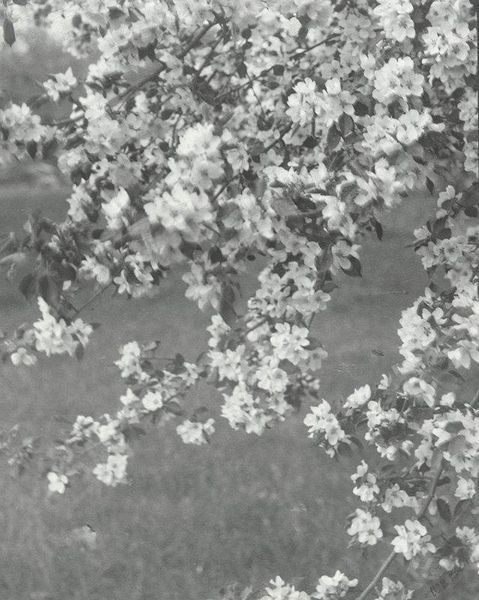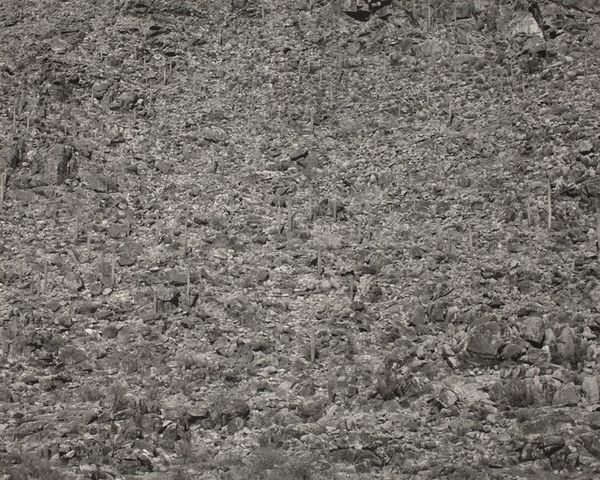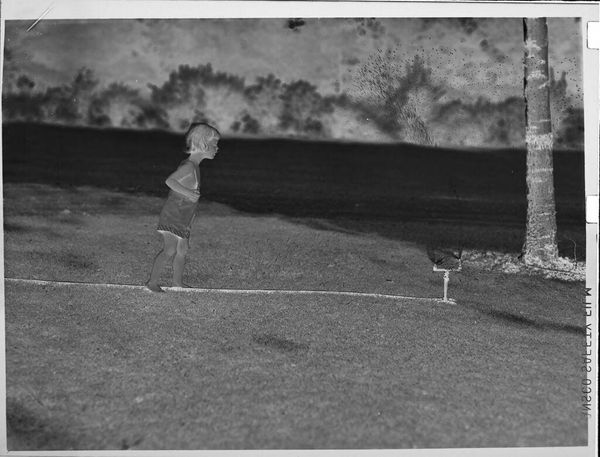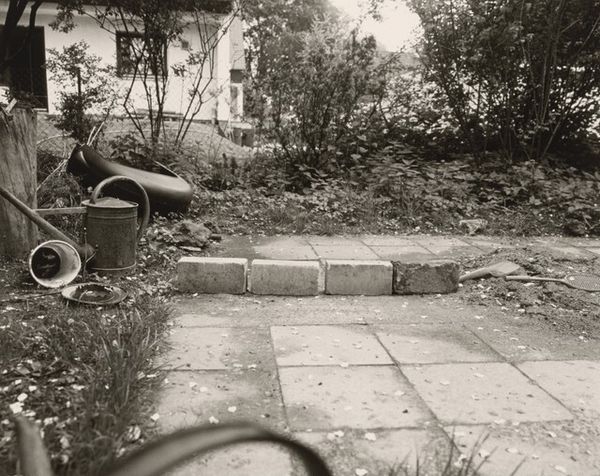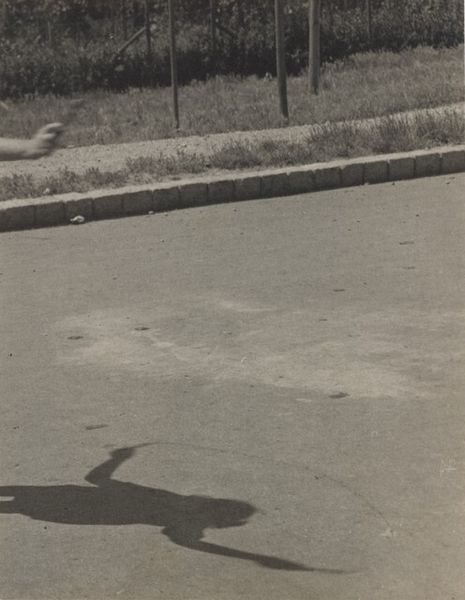
photography
#
conceptual-art
#
minimalism
#
landscape
#
photography
#
geometric
#
line
Copyright: Jan Dibbets,Fair Use
Curator: Jan Dibbets' photographic work "Perspective Correction" from 1968 confronts us with, quite literally, a shift in perspective. What do you make of its formal qualities upon first viewing? Editor: Stark, and perhaps intentionally disorienting. A monochrome field of grass, flattened, disrupted only by what appears to be an oddly angled, seemingly random quadrilateral at the top left. There's a tension created by the line cutting into the image. Curator: Precisely. Dibbets is employing the principles of geometric abstraction and minimalism, isn’t he? He intervenes directly onto the landscape, imposing a strict, drawn shape to highlight our expectations of photographic representation and perspective. It becomes a meditation on the properties of the line in relation to depth. Editor: Indeed. Lawns are potent symbols within the cultural landscape. They’re loaded with connotations of control, manicured nature, and the imposition of human order upon the wild. Here, though, the simple addition of a white four-sided line pushes back against that symbolism, inviting a new kind of consideration of how we structure and classify the world. Curator: And consider the conceptual rigor! This isn't simply about capturing a landscape; it is a study of systems and how photography itself is inherently structured. It draws attention to the very act of perceiving. The tilted angle is meant to counteract our ingrained perceptions, causing us to question the validity of a picture. Editor: Yes, by highlighting the artificiality inherent to photography, Dibbets also brings attention to the subjective and mutable nature of reality itself. This rectangle becomes an entry point to that question of perspective; almost as if one were to "break through" and reconstruct our point of view. Curator: An exercise in challenging how our minds construct visual information! Editor: Exactly. Looking at it again, the simple insertion creates a tension, an unsettling sense of spatial dislocation within this very familiar and ordinary context. The photo feels like an invitation. Curator: I agree; it serves to highlight the limitations and biases inherent in human perception, using photography itself as the instrument to investigate those ideas. A potent reminder of how constructed "reality" truly is. Editor: I leave this conversation with the inclination to question my habitual ways of seeing. A successful piece that does more with less.
Comments
No comments
Be the first to comment and join the conversation on the ultimate creative platform.

